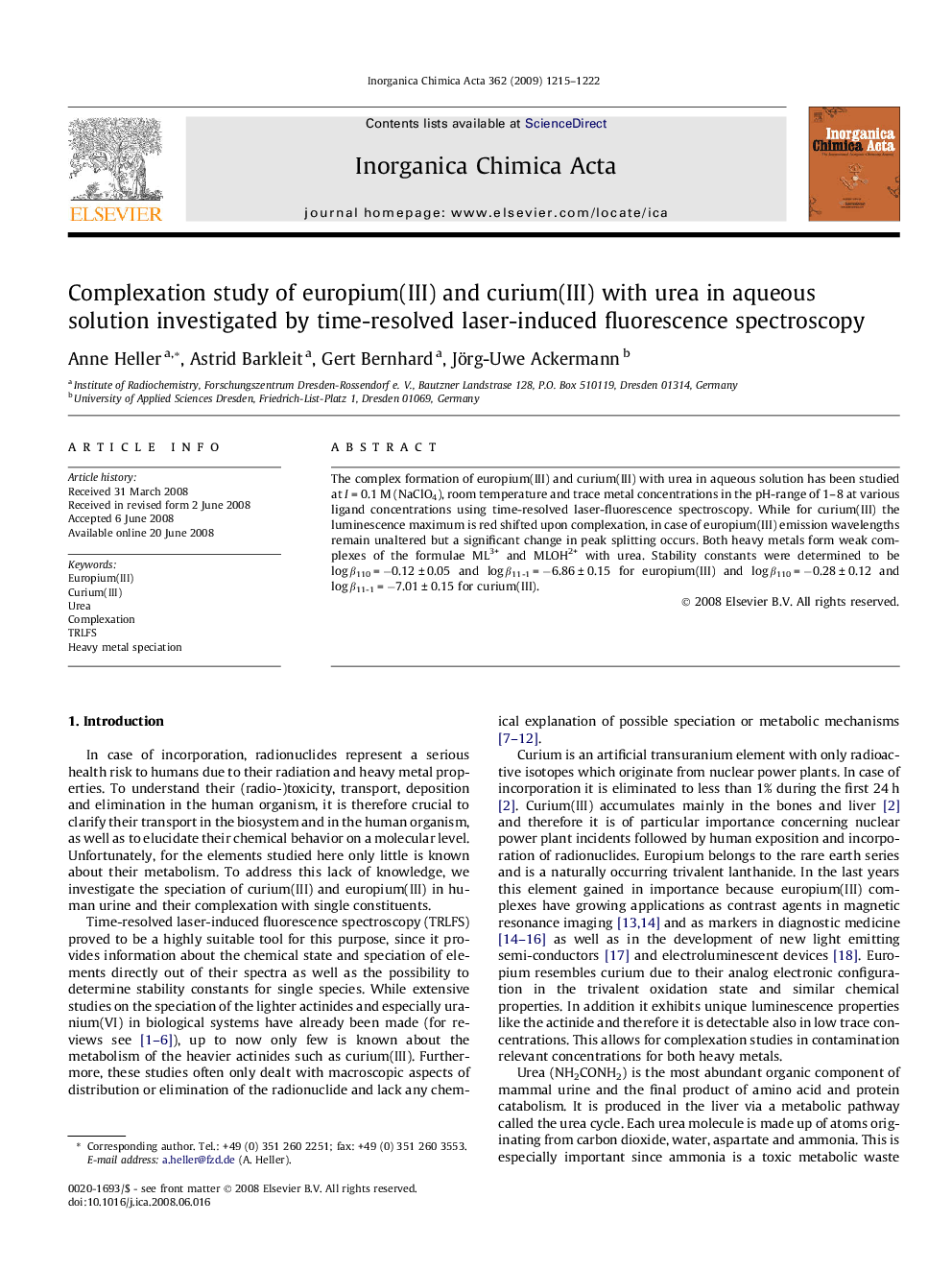| Article ID | Journal | Published Year | Pages | File Type |
|---|---|---|---|---|
| 1307055 | Inorganica Chimica Acta | 2009 | 8 Pages |
The complex formation of europium(III) and curium(III) with urea in aqueous solution has been studied at I = 0.1 M (NaClO4), room temperature and trace metal concentrations in the pH-range of 1–8 at various ligand concentrations using time-resolved laser-fluorescence spectroscopy. While for curium(III) the luminescence maximum is red shifted upon complexation, in case of europium(III) emission wavelengths remain unaltered but a significant change in peak splitting occurs. Both heavy metals form weak complexes of the formulae ML3+ and MLOH2+ with urea. Stability constants were determined to be log β110 = −0.12 ± 0.05 and log β11-1 = −6.86 ± 0.15 for europium(III) and log β110 = −0.28 ± 0.12 and log β11-1 = −7.01 ± 0.15 for curium(III).
Graphical abstractThe complex formation of europium(III) and curium(III) with urea has been studied using TRLFS. Stability constants were determined to be log β110 = −0.12 ± 0.05 and log β11-1 = −6.86 ± 0.15 for europium(III) and log β110 = −0.28 ± 0.12 and log β11-1 = −7.01 ± 0.15 for curium(III).Figure optionsDownload full-size imageDownload as PowerPoint slide
